A look inside the Salem bomb squad and why it needs a new truck
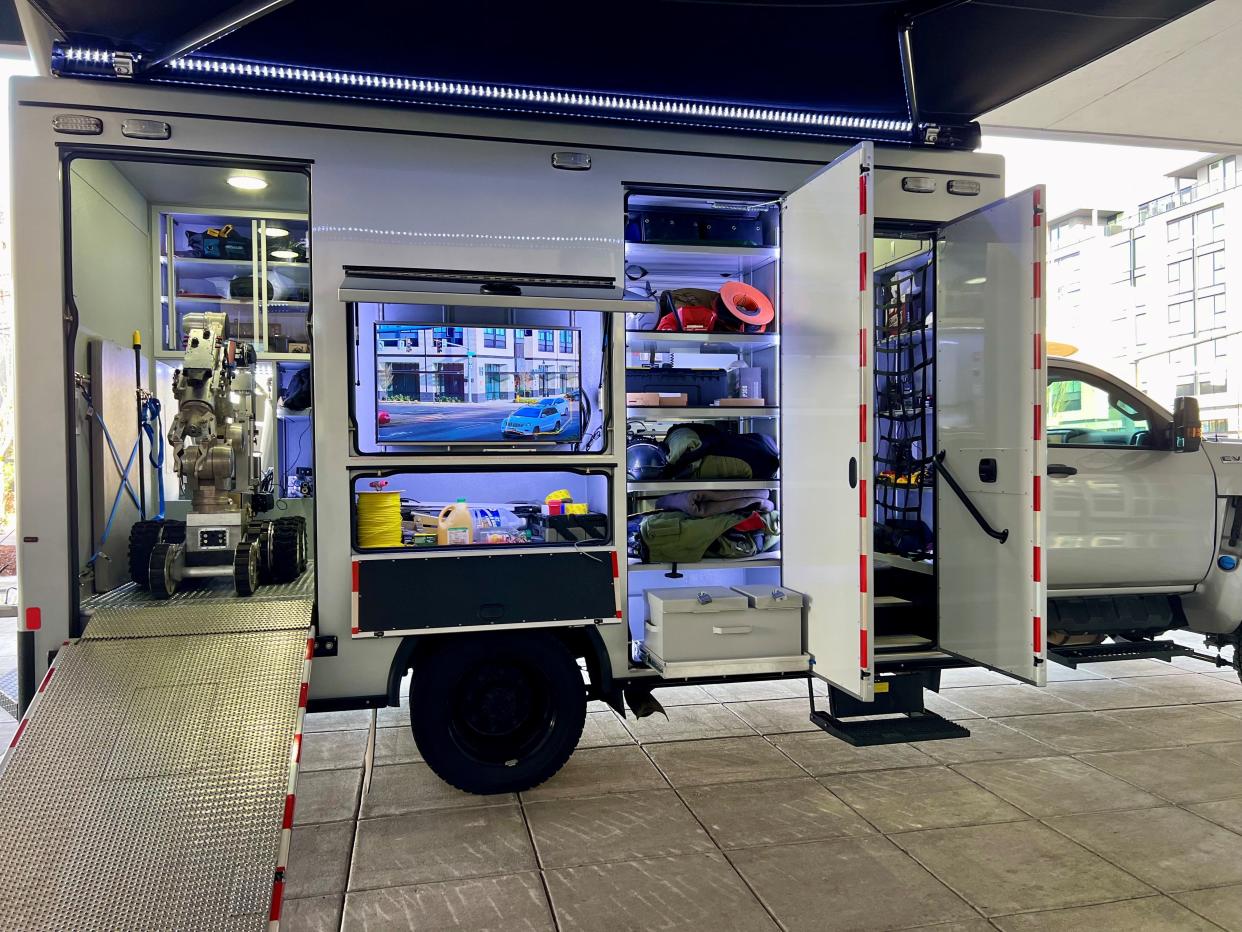
Salem Police Sgt. Jonathan Hardy has been planning for — and dreaming — of a new bomb truck for nearly three years, but budgeting for a $350,000 piece of equipment is never easy, especially with cuts threatening services across the city.
He and the police department understand the need now more than ever to rely on federal grants and local donors.
They appealed to potential donors during the Salem Police Foundation's annual Breakfast with the Chief fundraiser in February, reminding them about the dangers of explosives and the importance of state-of-the-art equipment.
“Because Salem and its surrounding communities are not immune from the threat and use of explosives in public and private spaces, we need to ensure our bomb squad can safely and effectively respond and keep us all safe,” Deputy Chief Treven Upkes told the crowd.
Upkes then invited attendees to compare bomb trucks parked side by side outside the Salem Conference Center.
One was Salem’s 20-year-old truck, the doorway steps crowded by a 530-pound robot and minimal storage space in an obsolete, nonfunctional design. The other was Oregon State Police’s new truck, its robot stored at the opposite end of the entrance and a sleek storage system with access to some compartments from inside and out.
Salem’s truck still runs. Its bomb technicians can still do their job.
“But it’s about how can we be more efficient and better at what we’re doing,” said Hardy, commander of the Salem bomb squad. “This is the one mission where we are entirely about community and public safety.”
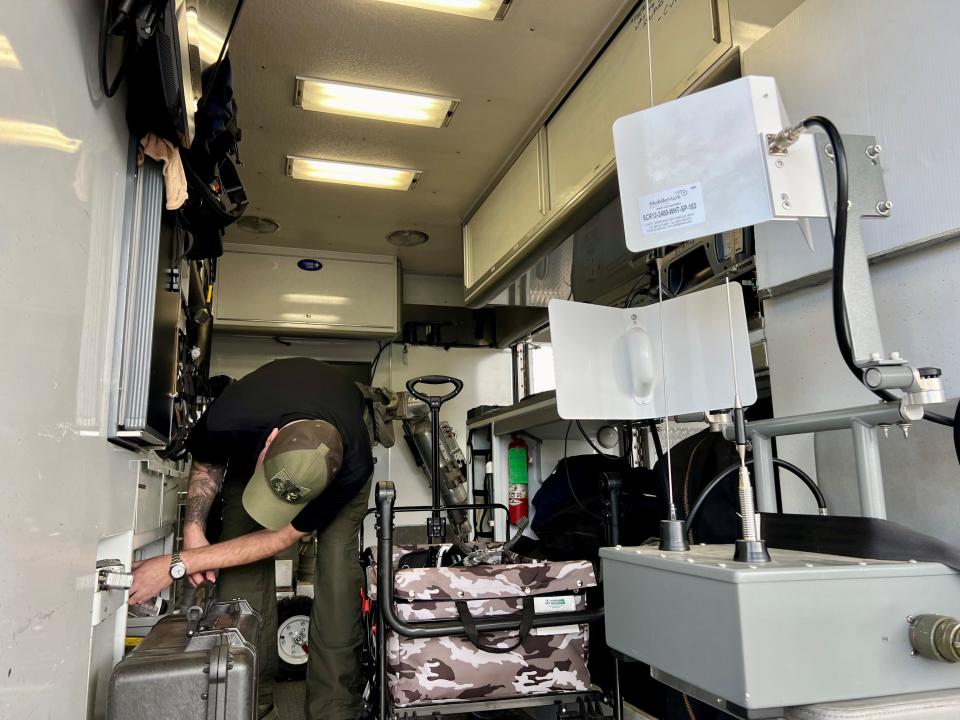
High-profile cases remind community of the need for bomb truck
The current bomb truck was put into service in 2004, just in time for two of Salem's most notorious cases involving explosives.
In 2006, a man terrorized the city by attaching pipe bombs to three random cars, hoping to throw officials off as he attempted to kill his ex-wife and gain custody of their children. The Salem bomb squad secured and disabled all the devices, which were active and could have injured or killed someone.
In 2008, the bomb squad was integral to the post-blast investigation after the Woodburn bank bombing, which killed two law enforcement officers and injured a third. The Salem bomb squad collected evidence that eventually led to the conviction of a father and son.
More recently, in 2019, the Salem Health emergency department had to be evacuated when a man seeking treatment pulled out a device that he claimed to be a bomb. The bomb squad took the device off-site, rendered it safe and determined it to be a hoax.
“To effectively respond to all of this activity,” Upkes told potential donors, “we need a modern, safe, reliable and effective vehicle and platform in order to store, transport and deploy from.”
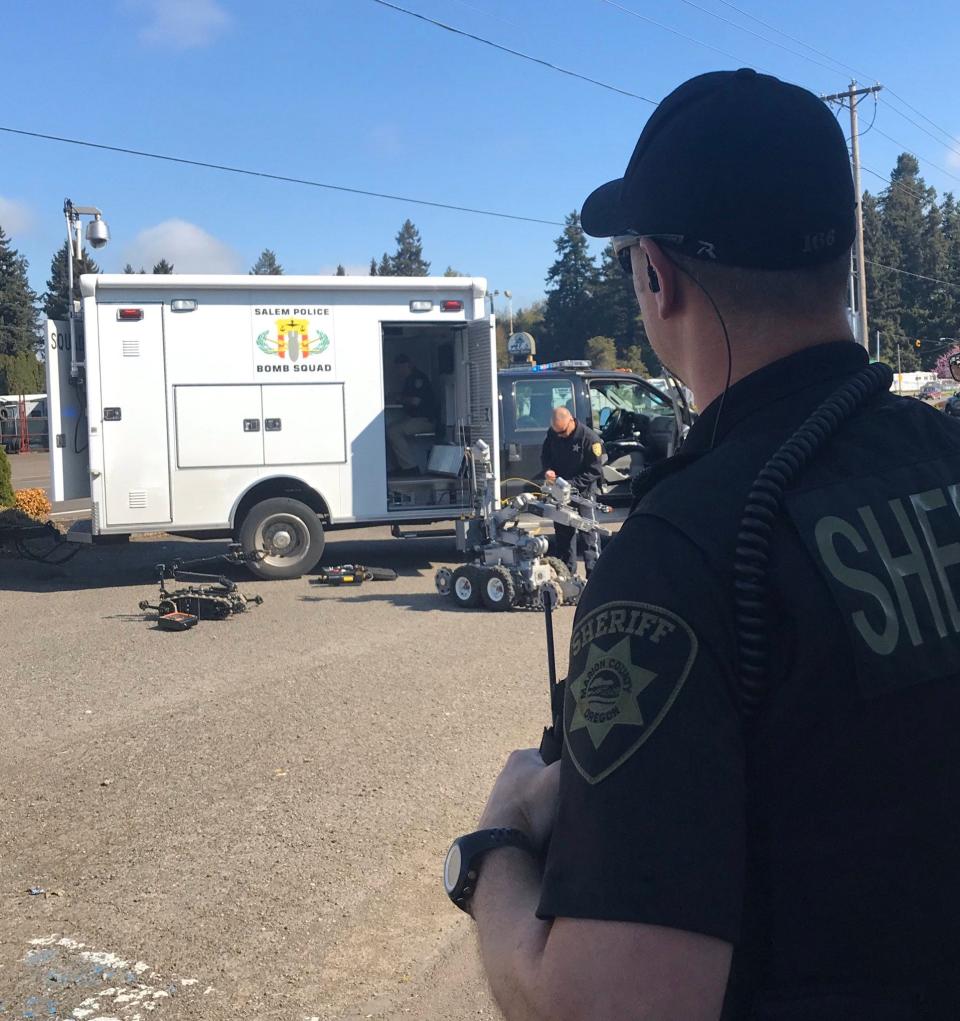
Bomb squad calls range from suspicious packages to SWAT support
The Salem bomb squad, one of only four in the state, averages about 70 calls a year. In 2023, Hardy said it logged 79 “incidents and activities.”
Incidents include responses to suspicious packages (13 calls last year) and actual improvised explosive devices or bombs (four). Activities include security sweeps (three) and public demonstrations and training. Every couple of years, for example, the bomb squad provides suspicious package training to city employees from the parks department.
Other types of calls include military ordnance (six), ammunition recoveries and disposals (four), and illegal fireworks (two). The bomb squad also responds to calls to assist investigations and other units. Three times last year, it used its metal detectors to sweep for shell casings at shooting scenes.
Twenty-two calls were in support of SWAT. Hardy said it is becoming more common for the bomb squad to deploy for a potential standoff situation at the same time as their SWAT colleagues instead of an hour later.
“We’re able to send a robot up to do a task, whether it’s to deliver a phone to negotiate, or to break a window open to try to get a view into the house or a drone in there,” he said. “We’re trying to do things remotely so that we can avoid at all costs that person-to-person conflict.”

Four bomb squads responsible for all of Oregon
Hardy's squad is one of more than 460 accredited FBI bomb squads in the United States. Each is an elite group of law enforcement officers trained to recognize, handle and dispose of explosive materials and devices.
The Salem bomb squad, with four certified bomb technicians and two assistants, is responsible for Salem-Keizer and all of Polk County, roughly 800 square miles with 300,000 citizens.
Oregon State Police, Eugene and Portland also have bomb squads. Eugene covers Lane County, Portland the Portland Metro area, and OSP the rest of the state with three trucks. All can support or fill in as backups for the others.
Hardy is a full-time administrative sergeant and part-time bomb squad commander. The other five members are officers, and the bomb squad is their secondary duty. They are assigned full-time duties in regular units such as patrol or traffic but are available on a 24-hour basis for any calls related to explosive devices.
There are approximately 3,000 bomb techs in the United States, not including the military’s explosive ordnance disposal technicians. The FBI assesses how many bomb techs each Hazardous Devices Unit (HDU) needs based on population and number of calls.
The FBI has approved Salem for two more, and one of its assistants is on track to attend the school this fall for certification.
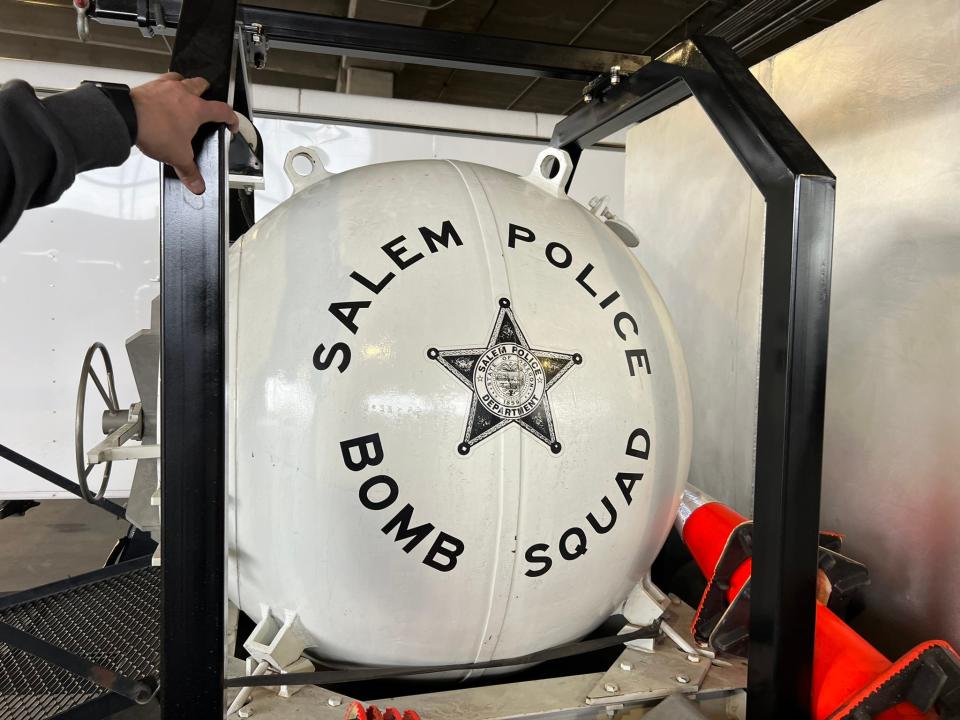
Bomb techs operate from the same playbook
All public safety bomb techs in the United States at the federal, state and local level are trained and certified at the FBI’s Hazardous Devices School in Huntsville, Alabama. It is the only civilian bomb school in the country.
Local agencies pay for the initial certification training of their officers. The FBI or other federally funded entities pay for all subsequent training, recertification and advanced training.
The six-week training takes place on a sprawling 455-acre campus at an Army installation with classrooms, explosive ranges and mock villages designed to present real-world situations, including a train station, apartment complexes, a movie theater and a strip mall.
Training includes identification of explosive devices and neutralization strategies; use of x-ray systems, robots, and bomb defusing equipment; and proper analysis, storage and disposal of defused explosive devices.
The certification process ensures all bomb techs, recertified at the school every three years, operate from the same playbook.
As one member of the OSP explosives unit said: “We wear a different uniform but are on the same team.”
Seeking initial certification takes nearly two years. The assistants on the Salem bomb squad provide support on actual calls and gain valuable experience and knowledge while waiting for a slot at the school.
“It’s a long process,” Hardy said. “That’s why you end up having only so many names on the board because once you’re invested, you’re invested.”
The board is a wooden plaque in his squad’s shop at Salem Police headquarters. On it are the names of every retired bomb tech and commander since the unit started in 1972. There are 17.
With the four bomb techs on the squad now, that’s just 21 in 52 years.
“What we find is, when people get into this job, they are techs for a long time,” Hardy said.
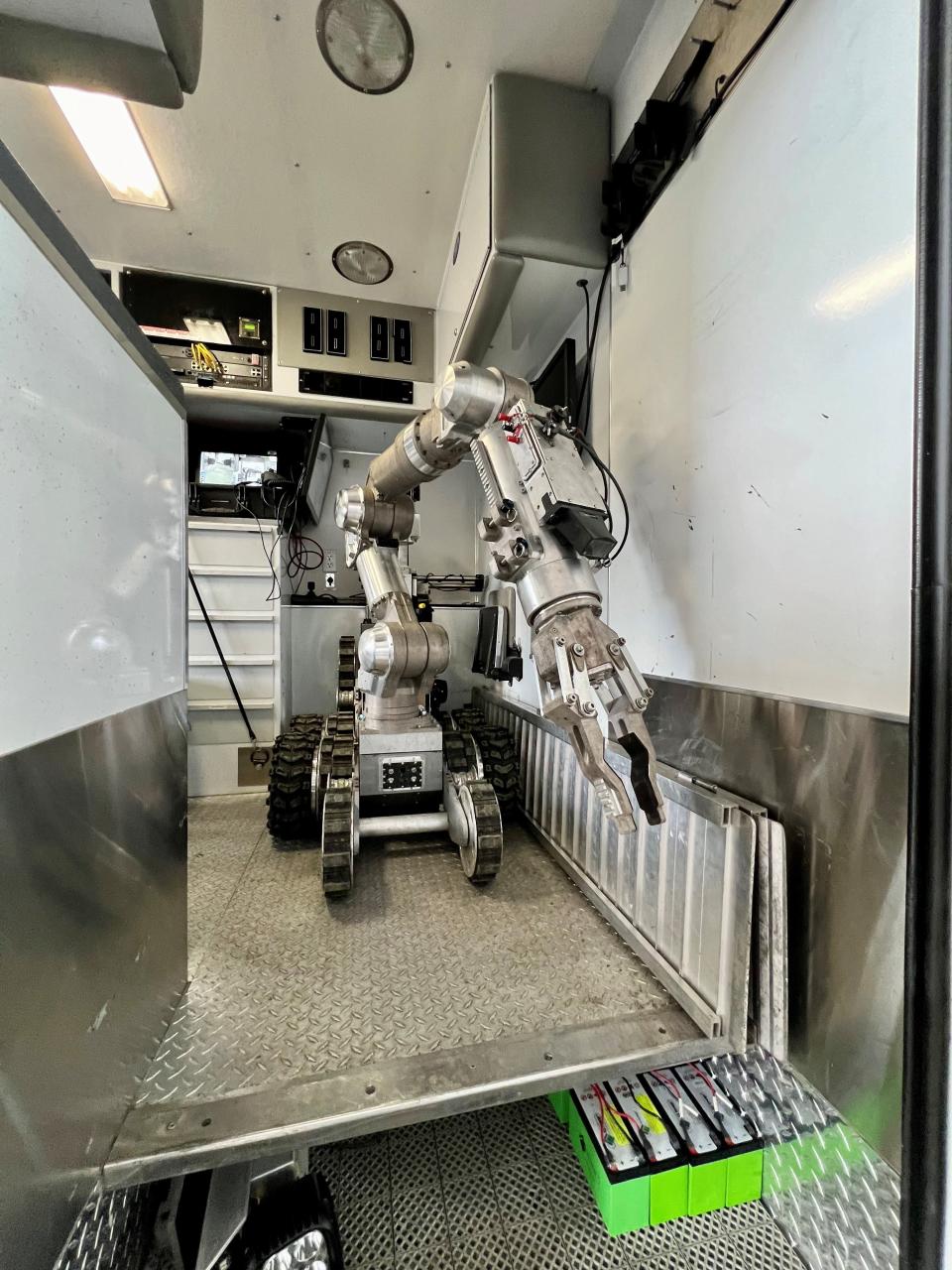
X-ray images are among primary diagnostic tools
Bomb techs use a variety of tools — from robots to X-ray machines — to identify, diagnose, and disrupt suspected or real explosive devices.
Salem bomb techs use two robots, a portable one weighing about 65 pounds and the heavy-duty “Spartan,” which is about eight times as big and partially blocks the entrance into their response vehicle.
The Spartan cost almost as much as a new truck and was purchased in 2022 using department funds. It has a 360-degree articulating arm and rugged mobility for indoor and outdoor use and stair climbing.
One of the primary diagnostic tools for suspicious packages and devices is an X-ray image. Special software can enlarge and digitally enhance the image analysis. The bomb techs can learn most of what they need to know about the device before they ever go near it, limiting their exposure to danger and injury.
“If it’s suspicious, we are going to treat it one way,” Hardy said. “That’s going remotely, then to suits.”
The bomb suits weigh 80 to 100 pounds. Salem has two, a medium and a large. The four techs share because the suits are expensive. Hardy said a new bomb suit costs about $40,000.
The bomb squad counts on federal grants to purchase big-ticket items, such as the Total Containment Vessel it tows behind the truck. The giant steel ball is designed to safely contain, transport and dispose of explosive devices.
“In reality, these are national security assets,” Hardy said. “They are part of an overall plan for the nation, so that’s how we qualify for a lot of grants.”
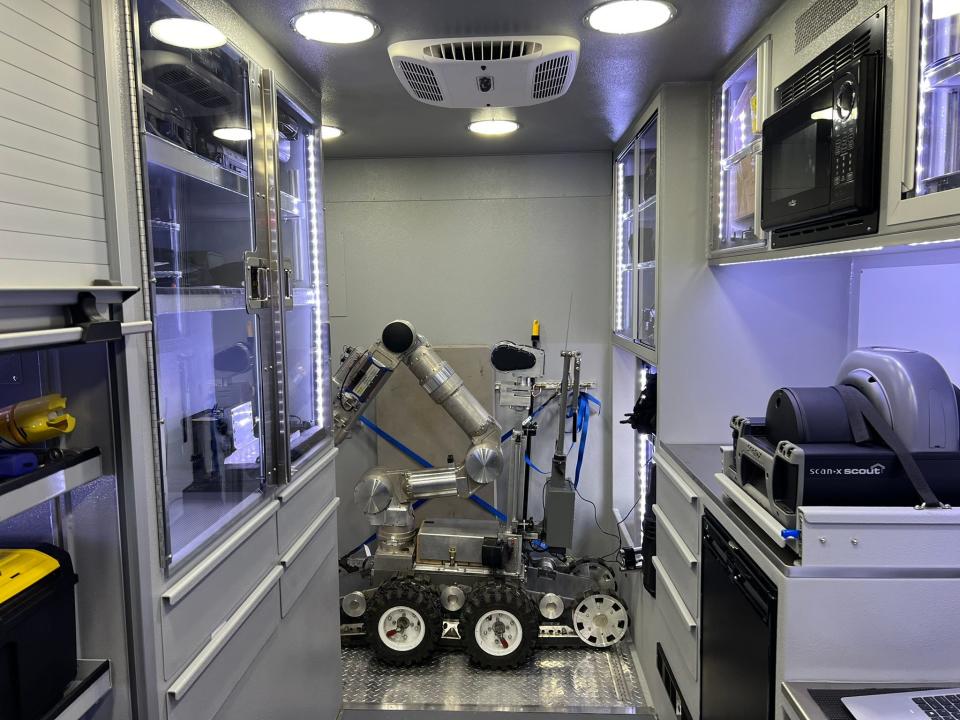
Cost of new truck mostly for fabrication and customization
Hardy figures Salem’s bomb truck is the oldest in the state. If money were no object, the department would have bought a new one by now. Instead, it has to save up, relying on grants and private donations.
The department took a similar route to purchase a $600,000 mobile command center in 2018, receiving federal and state grants worth $250,000 from the Oregon Department of Emergency Management and more than $100,000 in donations through the Salem Police Foundation.
The foundation launched fundraising for a new bomb truck at its Feb. 17 Breakfast with the Chief. By the end of February, it had received nearly $93,000 in donations, and donations continue to trickle in.
"What we raise will be added to any grants the police department is applying for," foundation president Lori Haraldsen said. "We didn't have a set goal, but we know the cost of the truck will be $300,000 to $400,000."
The campaign will continue through the foundation's newsletter and social media channels, most likely into next year. Haraldsen said the mobile command center project was a two-year ask and that the foundation is working on other opportunities such as donation matching and smaller campaigns.
They may invite individuals or businesses, for example, to donate a specific amount to pay for a particular part of the bomb truck, like the chassis, the tires or the awning.
Hardy said with grants and donations, the department has saved about $180,000, about half of what a new truck will cost. Much of the price tag is for fabrication and customization based on the bomb squad's needs.
He dreams of a truck where they no longer have to move or offload gear to have space to work inside and which has an easy-to-deploy integrated ramp like OSP has to unload their large robot like. With their truck now, they have to place portable aluminum ramps over the stairs to unload the Spartan.
He said they are fortunate today to have more equipment and tools to do their job safely and efficiently, but nowhere to store them. The Spartan is a much larger robot than they had 20 years ago.
“That truck wasn’t designed to carry that,” Hardy said. “There’s a ton of this equipment that wasn’t even around in 2004 when we bought this truck and had it built.
“This profession is much like iPhones. The minute I buy the new iPhone, it’s already obsolete.”
How to donate
Online: Click the "Donate Now" button on the homepage of the Salem Police Foundation website and donate using a credit or debit card.
Mail: Send a check to Salem Police Foundation, P.O. Box 2631, Salem, Oregon 97308-2631.
Contact: If you have questions, submit them to the foundation through its "Contact" button at the top of the homepage of its website.
Capi Lynn is a senior reporter for the Statesman Journal. Send comments, questions and tips to her at clynn@statesmanjournal.com, and follow her work on Twitter @CapiLynn and Facebook @CapiLynnSJ.
This article originally appeared on Salem Statesman Journal: A look inside the Salem bomb squad and why it needs a new truck

